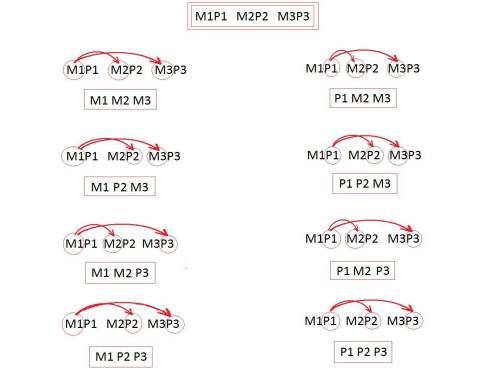
Biology, 31.07.2019 07:30, naiomireyes74p2aybs
An organism has 6 chromosomes (2n = 6) or 3 pairs of homologous chromosomes. assuming no crossing over occurs, how many different combinations of maternal and paternal chromosomes would be possible in its gametes? remember that each gamete will contain three chromosomes, and each of these will be either maternal or paternal. (denote maternal chromosomes m1, m2, m3 and paternal chromosomes p1, p2, p3.) list the possible eight combinations. (remember the formula is 2n, so in this case 23 = 8.)

Answers: 1
Other questions on the subject: Biology

Biology, 22.06.2019 18:30, ellamai16
On a spring day, a middle-latitude city (about 40? north latitude) has a surface (sea-level) temperature of 10 ? c. if vertical soundings reveal a nearly constant environmental lapse rate of 6.5 ? c per kilometer and a temperature at the tropopause of –55 ? c, what is the height of the tropopause?
Answers: 3


Biology, 23.06.2019 02:00, jk8
Ascientist is explaining how background cosmic radiation gives evidence of the big bang theory. she says that radiation has been detected everywhere equally as heat in the universe and is increasing. this has been shown to be residual radiation from the big bang. what error did the scientist make?
Answers: 1
Do you know the correct answer?
An organism has 6 chromosomes (2n = 6) or 3 pairs of homologous chromosomes. assuming no crossing ov...
Questions in other subjects:

History, 11.05.2021 04:40





Mathematics, 11.05.2021 04:40


Mathematics, 11.05.2021 04:40


Spanish, 11.05.2021 04:40








